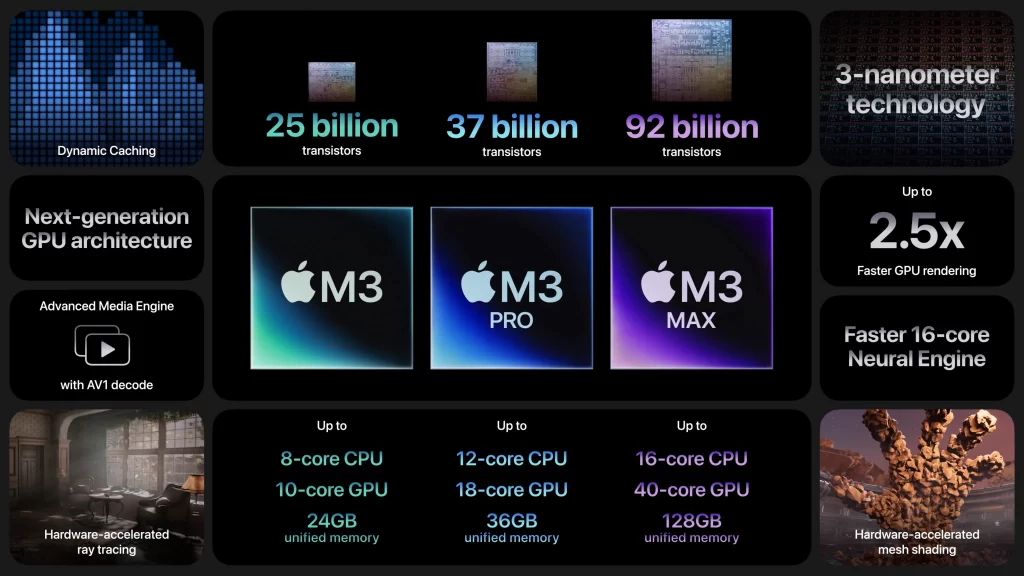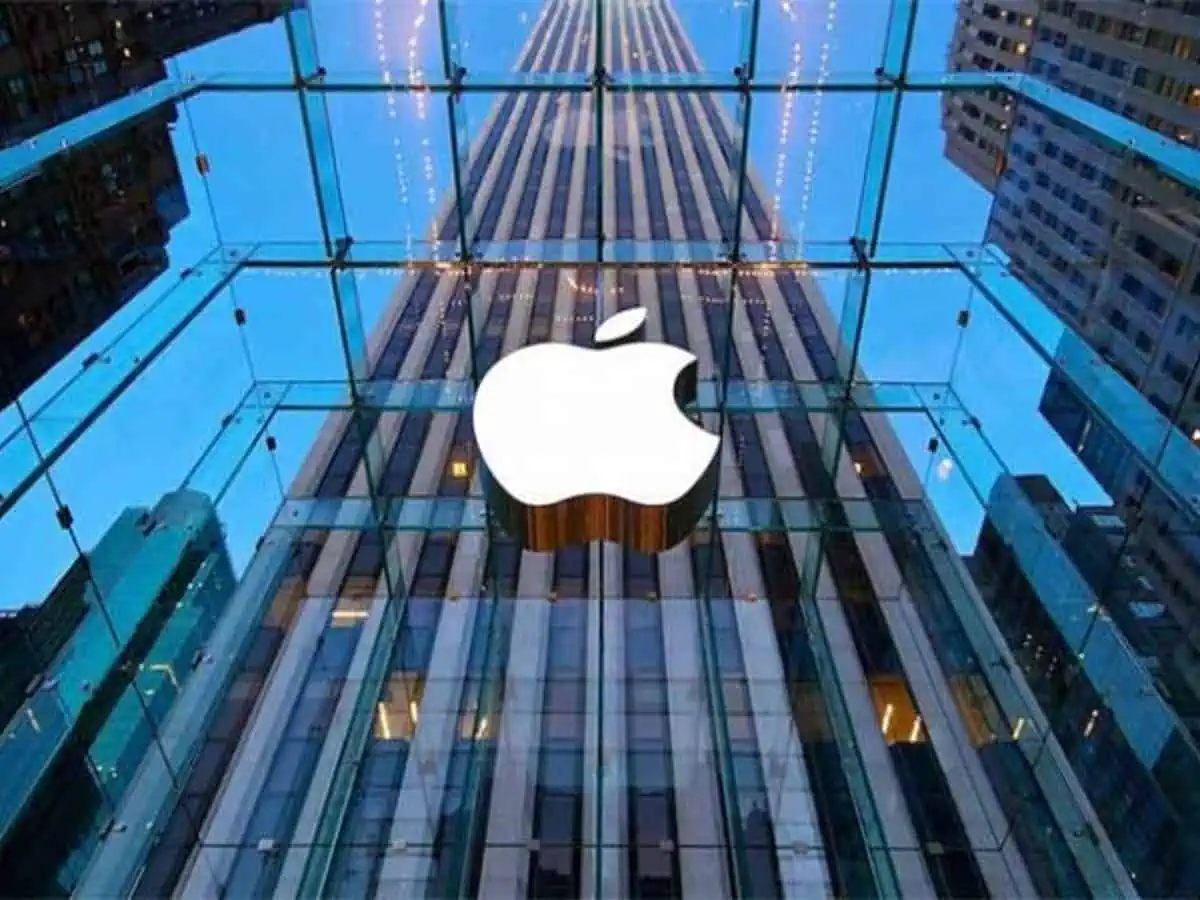Introduction:
In the fast-paced world of technology, innovation is the key to staying ahead in the competitive landscape- One significant trend that has emerged in recent years is the decision by big tech companies designing their own Silicon chips.
This strategic move offers a plethora of benefits, ranging from enhanced performance to increased control over the entire product development cycle. In this blog post, we’ll explore the reasons behind this shift, the advantages it brings, and highlight some notable examples of companies leading the charge.
Join Our WhatsApp News for updated information on semiconductors & AI
The Journey of Big Tech Designing Silicon Chips Starts with Apple
Early Dependence on Intel (2006-2020):
Until 2006, Apple relied on PowerPC architecture for its Mac computers. However, citing performance concerns, Apple made a significant shift by adopting Intel processors for its Mac lineup.
The Intel-based Macs provided a boost in performance and compatibility, aligning with Apple’s goal of delivering powerful and versatile computing devices.
The Need for Customization (2010s):
As technology advanced, Apple’s ambitions grew beyond what generic processors could offer. The rise of mobile devices and the increasing demand for energy-efficient yet high-performance computing solutions became key drivers for change.
Apple began feeling constrained by the limitations of off-the-shelf processors in meeting its specific requirements, especially in the realm of artificial intelligence, machine learning, and optimized power consumption.
Launch of Apple Silicon (2020):
In June 2020, Apple announced its transition away from Intel processors to its custom-designed Apple Silicon, starting with the M1 chip.
The M1 marked a paradigm shift, boasting impressive performance improvements, energy efficiency, and the ability to run iOS apps natively on Macs. Apple’s decision to design its own chips was grounded in the pursuit of greater control, performance optimization, and ecosystem integration.

Apple’s latest announcement of the M3 chip and new MacBook Pro models is poised to transform the tech landscape.
Read More: Apple Announces M3 Chips: The Biggest Upgrade to the Mac Since M1
Advantages of Apple Silicon:
Performance: Apple Silicon, especially the M1, demonstrated remarkable performance gains compared to Intel-based Macs. This was evident in tasks such as video editing, graphics rendering, and everyday computing.
Efficiency: Apple Silicon emphasized energy efficiency without compromising performance. This was crucial for Apple’s product lineup, aligning with the increasing emphasis on sustainability and longer battery life in portable devices.
Unified Architecture (2020 Onwards):
With the introduction of Apple Silicon, Apple aimed to create a unified architecture across its product ecosystem. This unified approach allowed for seamless integration between devices, simplifying software development and enhancing the overall user experience.
Inspiring Industry-wide Shift (2020s):
Apple’s success with Apple Silicon sent ripples through the tech industry, inspiring other companies to explore or accelerate their in-house chip design efforts.
The efficiency and performance gains achieved by Apple encouraged other major players to consider the strategic advantages of custom-designed chips in different application domains.
Impact on Competitors and Industry:
Companies like Microsoft, Google, and Amazon started investing more in custom chip designs for their respective hardware products and cloud services.
The shift towards in-house chip design has become a defining trend, reshaping the dynamics of the semiconductor industry and challenging the traditional model of outsourcing chip manufacturing to specialized foundries.
Broader Implications and Future Trends:
The success of Apple’s transition to Apple Silicon underscored the importance of holistic control over the hardware and software stack.
As technology continues to evolve, the trend of major companies designing their own chips is likely to persist, contributing to ongoing innovation and competition in the semiconductor space.
Read More: How Much Is the Price of Latest Apple Macbook in India?
4 Reasons Why Big Tech Companies are Designing their Silicon Chips?
1. Enhanced Performance and Customization
One of the primary motivations behind companies opting for in-house chip design is the desire for enhanced performance and customization. Off-the-shelf chips may not always meet the specific needs of a company, especially when it comes to specialized tasks such as artificial intelligence (AI) or machine learning (ML). By designing custom chips, companies can tailor the hardware to suit their applications precisely, resulting in significant performance improvements.
Example: Apple’s A-series Chips
Apple has been a trailblazer in this regard, developing its A-series chips for iPhones and iPads. These custom-designed chips not only optimize performance for Apple’s devices but also contribute to the seamless integration of hardware and software, providing a unique user experience.
Read More: I am an Apple Fan: Huawei CEO
2. Reduced Costs and Supply Chain Resilience
Cost considerations and supply chain resilience play a crucial role in the decision to design in-house chips. Developing proprietary chips can potentially reduce production costs by eliminating the need for third-party chip suppliers. Moreover, it mitigates the risks associated with global supply chain disruptions, a challenge that has become increasingly apparent in recent times.
Example: Amazon’s Annapurna Labs Division
Amazon’s Annapurna Labs division is actively involved in designing custom chips for its Echo smart speakers, Fire TV devices, and cloud computing services. This move not only helps in cost reduction but also ensures a more resilient supply chain for critical components.
Read more: Meta Embraces RISC-V for Videos, Inference Accelerators and Training Chips
3. Greater Control and Innovation
In-house chip design provides companies with greater control over the entire product development cycle, from hardware to software. This autonomy accelerates innovation by enabling faster iterations and the introduction of unique features that set products apart from competitors.
Example: Microsoft’s Surface Devices
Microsoft designs custom chips for its Surface devices, giving the company the flexibility to innovate across both hardware and software. This holistic approach has resulted in devices that offer a seamless user experience and a competitive edge in the market.
4. Proprietary Advantage and Differentiation
Custom-designed chips provide a proprietary advantage that can significantly differentiate a company’s products. This advantage goes beyond just performance improvements. This also allows for the development of unique functionalities that set products apart in a crowded market.
Example: Meta’s AI Infrastructure
Meta leverages custom chips for its AI infrastructure, contributing to the development of cutting-edge technologies such as virtual reality. The company’s Oculus virtual reality headsets, powered by custom-designed chips, offer a differentiated and immersive experience.
Read More: The Story of RISC-V
Conclusion: Shaping the Semiconductor Industry
The trend of major tech companies designing their own chips is reshaping the semiconductor industry. The shift to in-house chip design by tech giants like Apple, Google, Amazon, Microsoft, and Meta provides various benefits: cost reduction, innovation acceleration, and greater control. As technology advances, more companies are likely to follow suit, reshaping the landscape of chip design and manufacturing. In the ever-evolving tech industry, those who control their hardware destiny are poised to lead the way into the future.




